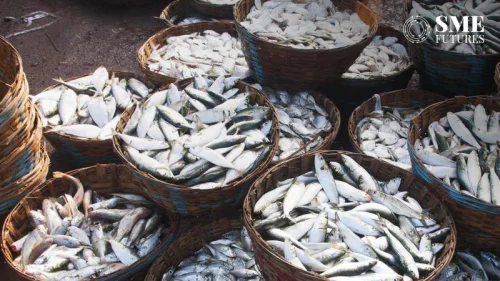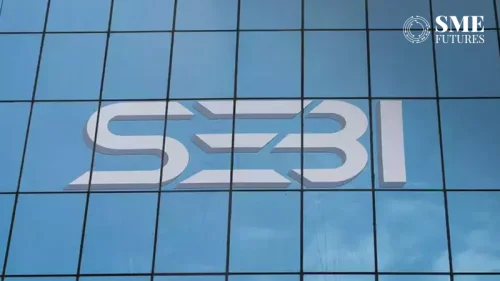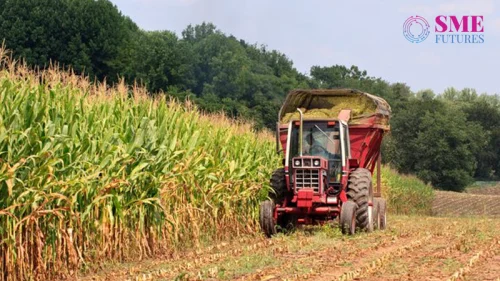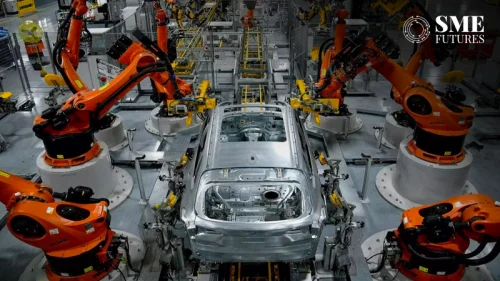The Production Linked Incentive (PLI) scheme for white goods, introduced by the Indian Government in 2021, aims to boost domestic manufacturing and enhance exports by providing financial incentives. The scheme has an outlay of ₹6,238 crores ($849 million) for a five-year period, targeting key sectors such as air conditioners and LED lighting. By 2023, the scheme had generated investments worth ₹1,500 crores and contributed to the creation of over 40,000 direct jobs. Additionally, domestic value addition in the white goods sector rose significantly, with the air conditioning industry seeing an increase from 25% to 45%. The PLI initiative is expected to drive exports by improving product quality and reducing dependency on imports. As of 2023, exports of electronic goods surged by 57.36% year-on-year, marking a promising trend.
The scheme’s impact is visible in both greenfield and brownfield projects, with companies committing substantial investments to expand their production capacities. However, supply chain disruptions and raw material price fluctuations remain challenges that need addressing to meet more ambitious targets.
In a comprehensive conversation with Pallavi Singh, Senior Vice President at Super Plastronics Pvt Ltd, brand licensee of Westinghouse TVs, we delve into the impact of the Production Linked Incentive (PLI) scheme on the white goods sector. Since its launch three years ago, the PLI scheme has significantly reshaped the manufacturing landscape, boosting domestic production, attracting investment, and enhancing India’s export competitiveness. As an industry leader, Singh shares her insights on how the scheme has accelerated growth and improved the domestic value addition in white goods, while also discussing Super Plastronics’ ambitious plans for the upcoming festive season.
Edited Excerpts:
It’s been three years since the launch of the PLI scheme for white goods. What’s the report card of the scheme and how will you rate its overall performance in India, if compared to the original targets?
The Production Linked Incentive (PLI) scheme has witnessed growth surpassing 3.2 lakh crores with significant contributions from white goods in India, marking a transformative period for the sector. The scheme has notably enhanced domestic manufacturing capabilities, with a significant FDI increase of 76% in 2022 in comparison to the previous year with numerous companies making substantial investments in both greenfield and brownfield manufacturing. This surge in investment has directly contributed to increased production volumes, addressing the growing demand for white goods. Furthermore, the scheme has spurred impressive growth in exports, as Indian-made white goods have gained a competitive edge in international markets due to improved quality and production efficiency.
Despite these successes, the scheme is facing ongoing challenges, including supply chain disruptions and fluctuations in raw material costs, which have occasionally hindered progress towards some of the more ambitious targets. These challenges underscore the need for continued support, including regulatory refinements and strategic adjustments to navigate the evolving market landscape effectively.
Overall, the PLI scheme has largely met its targets and made a positive impact on the industry, bolstering both domestic production and export performance. Looking ahead, there is optimism about the scheme’s future, particularly with its planned expansion to include television segments, which is expected to further drive growth and enhance the sector’s global competitiveness.
How has the PLI scheme impacted the ratio of domestic value addition in the white goods sector and industry growth?
The PLI scheme has significantly boosted domestic value addition in the white goods sector by helping to establish a comprehensive ecosystem. Domestic value addition has increased from 25% to 45%, specifically in the air conditioner industry. This increase in domestic content has been accompanied by strong industry growth, with expanded production capacities, improved product quality, and higher export volumes. Overall, the PLI scheme has effectively enhanced both the sector’s domestic value and its competitive position in the market.
What specific changes or improvements in domestic manufacturing have resulted from the scheme?
The PLI scheme has led to several specific improvements in domestic manufacturing within the white goods sector. For example, exports of electronic goods had increased by 57.36% during March 2023 at USD 2.86 billion as compared to USD 1.82 billion in March 2022. It has spurred substantial investments in new manufacturing facilities and upgrades to existing plants, improving India’s ranking on the global manufacturing index. Companies have also increased their focus on sourcing components locally, strengthening the domestic supply chain and reducing dependency on imports. Additionally, the scheme has driven innovations in manufacturing processes and quality standards, leading to higher efficiency and better product quality. The PLI scheme has revitalised domestic manufacturing by fostering growth, increasing self-reliance and improving competitiveness.
Let’s talk about the market. What are your expectations from this festive season?
For the upcoming festive season, we are anticipating a significant growth in our sales, projecting an increase of 100-150% compared to the current period’s figures. This expected surge is not just a short-term spike; we anticipate that this growth will be sustained throughout the season, reflecting a substantial and enduring boost in our market performance.
A key factor in this optimistic forecast is the expansion of our production capabilities. Our current plant has served us well, but the new facility we are bringing will revolutionise our manufacturing capacity. With a 10X increase in production capabilities, this new plant will enable us to scale up our operations to meet the heightened demand efficiently. We are confident that this upgrade will be instrumental in supporting our sales objectives and ensuring that we can fulfil orders swiftly.
In addition to enhancing our production capabilities, we will be implementing a range of strategic initiatives to capitalise on the festive season. We will offer attractive discounts to our customers, making our products even more appealing during this high-demand period. Furthermore, we are focused on expanding our customer base by reaching out to new market segments and building stronger relationships with our existing customers.
Overall, we are hopeful for a highly successful festive season and are committed to leveraging our improved production infrastructure and promotional strategies to maximise our growth and reinforce our position in the market.
What is your current production capacity, and what strategies are you implementing to boost it during the festive season?
Currently, our production capacity is set at 2,000 units per day. To effectively boost this capacity and meet the anticipated surge in demand during the festive season, we are implementing a comprehensive set of strategies aimed at optimising our operations and maximising output.
Firstly, we are focusing on refining our production processes to enhance overall efficiency. This involves reforming workflows, minimising downtime by running multiple shifts and addressing any bottlenecks in the production line. By augmenting these processes, we aim to increase the speed and efficiency of our manufacturing operations, allowing us to increase our production within the same time frame.
In addition to process optimisation, we are expanding our workforce to accommodate the increased demand. This includes hiring additional staff and implementing extended shifts to ensure that our production lines are running at full capacity throughout the day. By increasing our manpower and extending operational hours, we can significantly boost our daily output and better manage the influx of orders.
Moreover, we have invested in upgrading our machinery and technology. This investment is crucial as it enables us to enhance production capabilities, improve product quality, and support a higher volume of output. The new machinery and advanced technology will provide the reliability and precision needed to maintain high standards while scaling up production.
These combined efforts are strategically designed to handle the expected increase in orders efficiently and uphold our commitment to delivering high-quality products to our customers. By optimising our processes, scaling up our workforce, and upgrading our technology, we are well-prepared to meet the festive season’s demands and ensure a successful and productive period.











